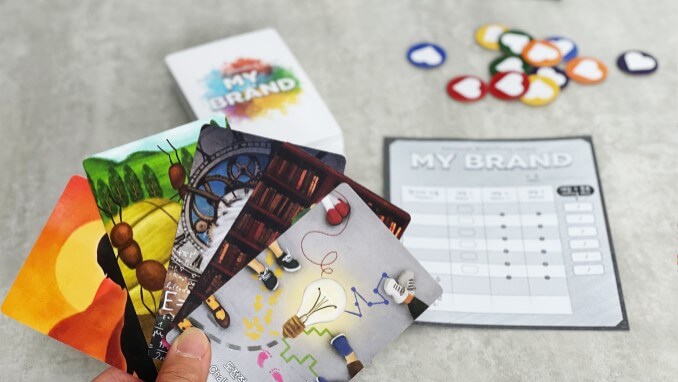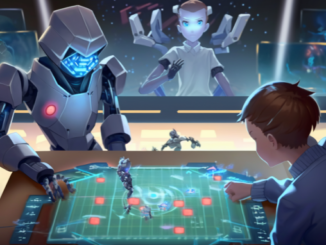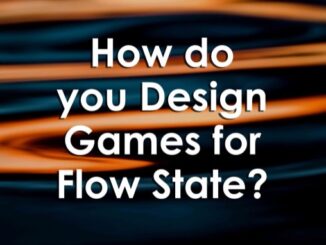
Ludogogy has entered into an agreement with Gamification Journal, based in Seoul, South Korea, for the mutual exchange of articles. This is the twelfth of those articles we are publishing and it was in exchange for Deirdre Jensen’s article on how to ensure your team thrive in a virtual environment.
It has been more than twenty years since the board game culture, which had been very popular in Europe, was introduced into Korea. Board game culture in Korea has grown year by year, and various board game products have launched with more and more people enjoying them.
The high demand for education in Korea, combined with the rise in board game culture, has meant that diverse educational board games have been developed. However, we have often seen board games with problems in this area, such as being incorrectly structured.
In ‘Gemblo Company’, we consider several key factors when developing educational board games to ensure that they are useful for learners. I introduce these below, along with related examples.
The connection between theme and game method
First, the theme of the game should be education, but the gameplay should also be relevant to education. In other words, the game should look like it has an educational purpose, but if it does not include real and enjoyable gameplay, it’s problematic.
For example, if the theme is environmental protection, but the game method is just simply to collect cards related to environmental protection. It looks like ‘Environmental protection’, but the play experience is just ‘collecting cards’. If an educational board game doesn’t include a connection between theme and game method, this kind of educational board game is not recommended.
This kind of educational board game can be easily seen in Korea (and everywhere else too – Editor). It seems to have educational content, but in many cases, the gameplay or experience is just mimicking famous international games like ‘Halli Galli’ or ‘Monopoly’, etc.
“MY BRAND”
‘MY BRAND’ was developed with a clear objective, to be a personal branding game, rather than relying on typical board game styles. It’s based on the generally known psychological character model, BIG 5 (Big 5 personality traits), and education professionals from various fields participated in its development.
Through this game, players connect their personal branding identities with cards, and these are also connected with other people’s thoughts about them. Players can design and implement their brand identity through the game and its process.
My brand and style and others can be visualised through one hundred emotional brand cards. Also, players analyze the meaning of brand cards from various perspectives, and communicate with each other to increase the mutual understanding in this board game.
After finishing the game, the graph shows each of the characteristic of the players, leading to them obtaining their brand graphs.
The balance between the fun of the game and the system
Second, it is important that there is balance in the game. The educational content and fun of the game need to be balanced. A few educational board games include educational content where the level is almost equivalent to academic papers. This is because educational professionals, with a high level of domain knowledge, have made the games. But without games design expertise also, they can lack the system of the game, which would make them fun to play and successful in the marketplace.
From the opposite perspective, some board games include the fun or system of the game quite well, but there is less educational content, or no participation by education professionals. Simple domain research by game developers is clumsily included in the game, attracting criticism from education professionals.
Therefore, to develop educational board games, top-level education professionals in relevant fields need to review the board game or participate in the development process.
FL!P

FL!P is a communication game that was developed by TLP (TURNING LEARNING POINT)’s educational design research center and edited by the Gemblo Company. Experts in transactional analysis and board game developers co-participated in this development.
Players explain their negative points by indicating the cards, and it can help them find real-life negative traits. After shuffling their negative cards in envelopes, cards can be flipped by opening the envelopes one by one. Cards with negative points are changed into those with positive points, that are related to the negative ones. In this process, players guess who has these positive points once again.
By finding the negative points and connecting them with positive ones, each negative point is naturally disclosed to other players. And by flipping the cards, they develop the thought that each negative point can also become a positive one.
This board game covers the insights that self-selected negative points can be thought of as positive ones, and the type of characters being matched with each other.
Difficulty level being matched with learners
Finally, game difficulty and rules which are not matched with players must not be applied. I have seen an example where a history educational content was developed as a board game for elementary students, but the level of a board game was far beyond the typical competency level for elementary students.
On the other hand, I have also see business simulation board games for adults where the mechanics of party games or family games with comparatively low difficulty were used.
The board game has a long history because it was the first type of game that human beings developed. However, the play itself is not as complex as that seen in computer and mobile games. If developers try to push to make equivalently complex games systems and components, the level of difficulty in play is significantly increased. Therefore, if you want to include educational content, the level of difficulty in the game needs to be structured by considering the level of experience needed for the target players.
I have explained the key considerations in the development of board games and given two real development cases. By simply gathering and playing, players can recognize different personality traits, and together explore positive or negative points, and how negative points can be transformed into positive ones. These are the effects of FL!P, an example of how educational board games can include both fun and learning effects.
If you explore and study board games which meet the criteria mentioned above, you will discover a medium with great potential to present useful information to people and show relevant insights. Educational board games help people directly play, experience, and feel, while connecting people with emotions in a tangible analogue way.
In terms of directly experiencing and trying something together, communicating, interacting, and learning with inspiration, educational board games are an innovative area where we can expect a bright future.
- Key Factors of Educational Board Game Development - 13th December 2022





Be the first to comment